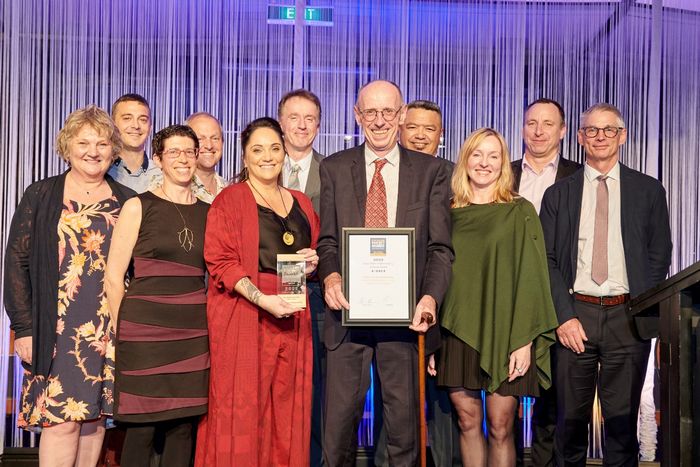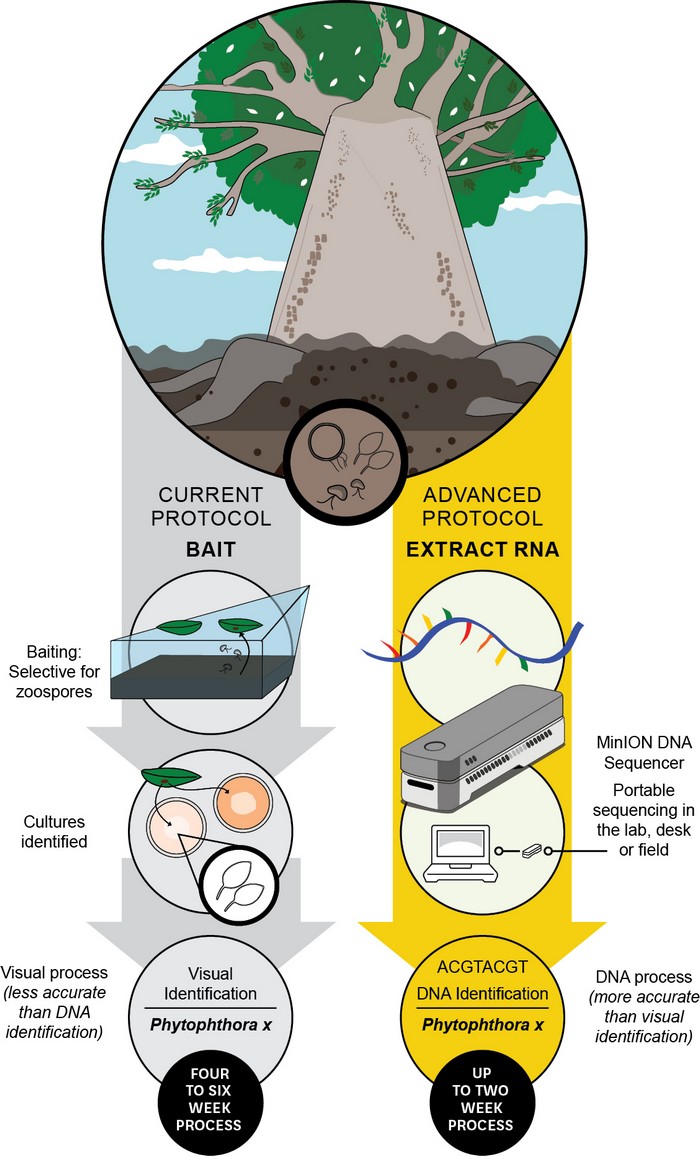Biosecurity in safe hands

Rapid identification of Phytophthora, “the plant destroyer”, and air sampling eDNA protocols for invasive pests are projects recently launched with funding received from Better Border Security (B3).
A substantial investment of $4 million has been made into protecting New Zealand’s valued flora, with B3 approving funding for 17 new biosecurity-related science projects in July 2022, including ones led by and involving Scion scientists.
Scion forest pathologist Darryl Herron and molecular entomologist Dr Andrew Cridge are leading two of the new projects, with Scion involved in another seven. B3 Director Dr David Teulon says research undertaken by partners like Scion within B3 works to minimise the entry and establishment of invasive pests, pathogens, and weeds that threaten Aotearoa New Zealand’s precious and productive plants.
“The B3 science programme has a substantial role to play in mitigating the existential impact of these exotic organisms on economically, environmentally, and culturally important plants by using research and its uptake to improve border biosecurity.” Herron’s three-year project, Beyond soil baiting: toward application of an eRNA diagnostic tool for Phytophthora, applies eRNA techniques for rapid identification of living pathogen communities in soils.
He says Phytophthora, “the plant-destroyer”, are water moulds that can cause severe disease in a number of important plant species, including kauri, pine and avocados.
“The project aims to develop a Phytophthora testing procedure as an alternative to soil-baiting, the current go-to method for surveillance of Phytophthora in soil.
“We hope by developing a repeatable and reliable eRNA protocol we can significantly reduce the time it takes to identify damaging and viable pathogens from weeks to days and improve the frequency of testing which could be critical in a biosecurity incursion.”
The project will be delivered in collaboration with iwi, Scion’s Te Ao Māori team, the Ministry for Primary Industries, the Universities of Canterbury and Massey, and a summer student. The second project, eDNA for terrestrial biosecurity monitoring, led by Cridge will develop robust air sampling eDNA protocols for invasive species.
Cridge says detecting a lone insect (or a few insects) flying through an uncontrolled site like a port is extremely difficult. “Testing using eDNA can help detect insect species flying through the air, and the accuracy of detection will increase as this fledgling technology improves over the coming years.
“eDNA surveillance measures have been used in aquatic environments but are not commonly used for biosecurity surveillance on land in New Zealand. The five-year project will involve the analysis of eDNA captured from the air for the identification of potentially invasive weeds, pathogens, and insects.”
Sample sites include the Port of Tauranga and Auckland Airport, and involve experts from Scion, Plant & Food Research, the University of Canterbury, Manaaki Whenua Landcare Research, and Wilderlab.
Research projects like these and their impacts were recognised at the New Zealand Biosecurity Awards in 2022 where B3 was named the winner of the Biosecurity NZ Science Award.

